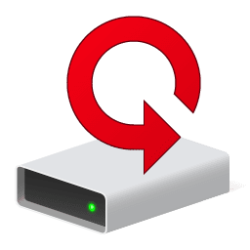- Local time
- 9:24 AM
- Posts
- 152
- OS
- Windows 11
I'm trying to understand the proper use of all Secure Erase, Sanitize (I understand that Secure Erase is to be used for SSD while Sanitize is for HDD), Clean all and format for my SSD and HDD so I have a few questions:
Is "clean all" the same as Secure Erase or Sanitize? or is it different? is there any benefit for the SSD or HDD from using this command after preforming Secure Erase or Sanitize?
After performing Secure Erase or Sanitize what's the proper format to be used? quick format? or the longer format?
If performing Secure Erase or Sanitize then followed by "clean all" is there any point in using the longer format?
Is the longer format the same as "clean all"?
I've seen people mention that "clean all" is bad and affects the lifespan of an SSD, does that also apply to a HDD?
Should "clean all" be completely avoided for SSD?
Is "clean all" the same as Secure Erase or Sanitize? or is it different? is there any benefit for the SSD or HDD from using this command after preforming Secure Erase or Sanitize?
After performing Secure Erase or Sanitize what's the proper format to be used? quick format? or the longer format?
If performing Secure Erase or Sanitize then followed by "clean all" is there any point in using the longer format?
Is the longer format the same as "clean all"?
I've seen people mention that "clean all" is bad and affects the lifespan of an SSD, does that also apply to a HDD?
Should "clean all" be completely avoided for SSD?
My Computer
System One
-
- OS
- Windows 11
- Computer type
- PC/Desktop
- Manufacturer/Model
- Custom
- CPU
- Intel Core i5-14600KF
- Motherboard
- MSI PRO Z690-A WIFI DDR4
- Memory
- CORSAIR VENGEANCE RGB PRO SL 32GB (2x16GB) DDR4 3200MHz CL16
- Graphics Card(s)
- GIGABYTE 4080 Gaming OC
- Screen Resolution
- 1920 x 1080
- Hard Drives
- SAMSUNG 860 EVO 500GB, Kingston KC600 1TB
- PSU
- Lian Li Edge EG0850G 850W Gold
- Cooling
- ARCTIC Liquid Freezer III 360
- Keyboard
- Logitech G513 Carbon LIGHTSYNC RGB Mechanical
- Mouse
- Steelseries Prime
- Browser
- Firefox







